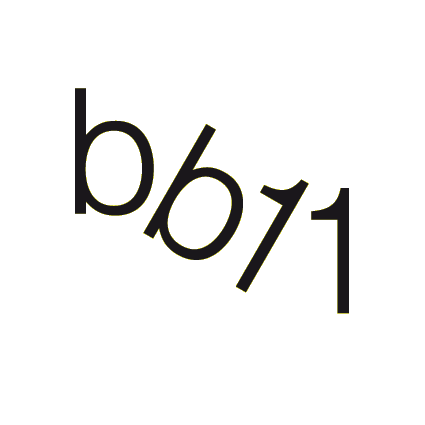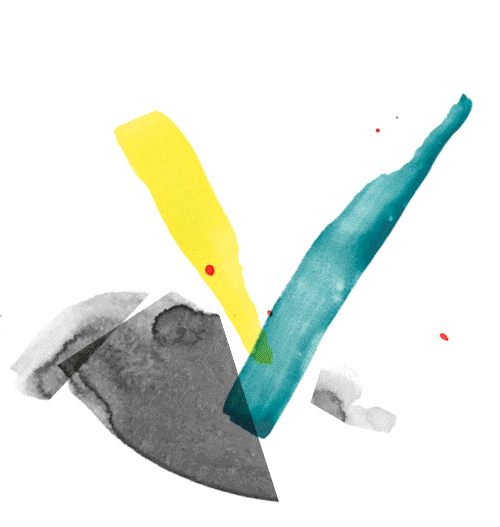

Sign up for our newsletters. You can change the settings or unsubscribe at any time.
Thank you for your subscription. We have sent you an e-mail with a confirmation link.


exp. 1
exp. 2
exp. 3

Francisco Copello
Venue: daadgalerie
Francisco Copello
Born 1938 in Santiago, CL – died 2006 in Santiago
Moving between performance, printmaking, photography, collage, choreography, and mime, the work of Francisco Copello is vital to understanding the emergence of performance art in Chile in the late 1960s as a political protest against a conservative society. However, his work has been largely excluded from the Chilean art historical canon—in part, because much of his professional trajectory took place in Italy and the United States.
On display are various collages from the 1990s consisting of photographs and other documentary material from earlier performances. They explore issues of gender ambiguity, mental illness, and the crisis of Chilean national identity in the aftermath of the violent interruption of the country’s revolutionary socialist experiment by the 1973 military coup. Pieza para locos [Piece for the Insane, 1973] pays homage to Francisco Goya’s Casa de locos [The Madhouse, 1812–19]. A hymn to freedom from a repressive society through the unconscious, this performance was meant to take place at the Museo Nacional de Bellas Artes in Santiago on September 12 and 13, 1973—the two days immediately following the coup d’état. But it was canceled, and forgotten by Chilean art history. The artist’s collage Madhouse (no date) includes photographs of a different performance of the work from this same period. After emigrating to Italy soon after the coup, Copello went on to perform other dramatic actions dealing with the subjugation of his compatriots, for example the ironic Calendario [Calendar, 1974], or his better-known El mimo y la bandera [The Mime and the Flag, 1974–75], both of which served as source material for subsequent collages. The Casta Diva [Chaste Goddess, 1990] prints reference his 1985 performance at the Bronx Rehabilitation Center for 350 mental health patients; here he ironically addresses the displacement between the sexual and the mental, clinging to fantasy as a mode of escape.
Agustín Pérez Rubio
Undocumented Rumours and Disappearing Acts from Chile
María Berríos
Essay
Queer Ancient Ways: A Decolonial Exploration
Zairong Xiang
Monograph
THE MOBILIZATION
Nicolás Cuello
Text
#fight4rojava
Graffiti
El primer nueva corónica y buen gobierno
Felipe Guamán Poma de Ayala
Chronicle
I: Junto a las curadoras de la XI Berlin Biennale for Contemporary Art
Renata Cervetto, Lisette Lagnado
Conversation
By using this website you agree to the use of cookies in accordance with our data privacy policy.

Francisco Copello
Venue: daadgalerie
Francisco Copello
Born 1938 in Santiago, CL – died 2006 in Santiago
Moving between performance, printmaking, photography, collage, choreography, and mime, the work of Francisco Copello is vital to understanding the emergence of performance art in Chile in the late 1960s as a political protest against a conservative society. However, his work has been largely excluded from the Chilean art historical canon—in part, because much of his professional trajectory took place in Italy and the United States.
On display are various collages from the 1990s consisting of photographs and other documentary material from earlier performances. They explore issues of gender ambiguity, mental illness, and the crisis of Chilean national identity in the aftermath of the violent interruption of the country’s revolutionary socialist experiment by the 1973 military coup. Pieza para locos [Piece for the Insane, 1973] pays homage to Francisco Goya’s Casa de locos [The Madhouse, 1812–19]. A hymn to freedom from a repressive society through the unconscious, this performance was meant to take place at the Museo Nacional de Bellas Artes in Santiago on September 12 and 13, 1973—the two days immediately following the coup d’état. But it was canceled, and forgotten by Chilean art history. The artist’s collage Madhouse (no date) includes photographs of a different performance of the work from this same period. After emigrating to Italy soon after the coup, Copello went on to perform other dramatic actions dealing with the subjugation of his compatriots, for example the ironic Calendario [Calendar, 1974], or his better-known El mimo y la bandera [The Mime and the Flag, 1974–75], both of which served as source material for subsequent collages. The Casta Diva [Chaste Goddess, 1990] prints reference his 1985 performance at the Bronx Rehabilitation Center for 350 mental health patients; here he ironically addresses the displacement between the sexual and the mental, clinging to fantasy as a mode of escape.
Agustín Pérez Rubio
Hatred Among Us
Lisette Lagnado
Essay
El primer nueva corónica y buen gobierno
Felipe Guamán Poma de Ayala
Chronicle
O Bailado do Deus Morto
Flávio de Carvalho
Play
Maternidades subversivas
María Llopis
Monograph
Being in Crisis together – Einander in Krisen begegnen
Feminist Health Care Research Group (Inga Zimprich/Julia Bonn)
Online workshop
COVID-19 VIDEOS
Carlos Motta
Video
By using this website you agree to the use of cookies in accordance with our data privacy policy.

Francisco Copello
Venue: daadgalerie
Francisco Copello
Born 1938 in Santiago, CL – died 2006 in Santiago
Moving between performance, printmaking, photography, collage, choreography, and mime, the work of Francisco Copello is vital to understanding the emergence of performance art in Chile in the late 1960s as a political protest against a conservative society. However, his work has been largely excluded from the Chilean art historical canon—in part, because much of his professional trajectory took place in Italy and the United States.
On display are various collages from the 1990s consisting of photographs and other documentary material from earlier performances. They explore issues of gender ambiguity, mental illness, and the crisis of Chilean national identity in the aftermath of the violent interruption of the country’s revolutionary socialist experiment by the 1973 military coup. Pieza para locos [Piece for the Insane, 1973] pays homage to Francisco Goya’s Casa de locos [The Madhouse, 1812–19]. A hymn to freedom from a repressive society through the unconscious, this performance was meant to take place at the Museo Nacional de Bellas Artes in Santiago on September 12 and 13, 1973—the two days immediately following the coup d’état. But it was canceled, and forgotten by Chilean art history. The artist’s collage Madhouse (no date) includes photographs of a different performance of the work from this same period. After emigrating to Italy soon after the coup, Copello went on to perform other dramatic actions dealing with the subjugation of his compatriots, for example the ironic Calendario [Calendar, 1974], or his better-known El mimo y la bandera [The Mime and the Flag, 1974–75], both of which served as source material for subsequent collages. The Casta Diva [Chaste Goddess, 1990] prints reference his 1985 performance at the Bronx Rehabilitation Center for 350 mental health patients; here he ironically addresses the displacement between the sexual and the mental, clinging to fantasy as a mode of escape.
Agustín Pérez Rubio
Umbilical Cord Amulet
McCord Museum
Object
Flávio de Carvalho: Fazenda Capuava
Archive of Lisette Lagnado
Photographs
Freiheit für Chile!
Anonymous
Photo album
Queer Ancient Ways: A Decolonial Exploration
Zairong Xiang
Monograph
Hatred Among Us
Lisette Lagnado
Essay
El primer nueva corónica y buen gobierno
Felipe Guamán Poma de Ayala
Chronicle
By using this website you agree to the use of cookies in accordance with our data privacy policy.

Francisco Copello
Venue: daadgalerie
Francisco Copello
Born 1938 in Santiago, CL – died 2006 in Santiago
Moving between performance, printmaking, photography, collage, choreography, and mime, the work of Francisco Copello is vital to understanding the emergence of performance art in Chile in the late 1960s as a political protest against a conservative society. However, his work has been largely excluded from the Chilean art historical canon—in part, because much of his professional trajectory took place in Italy and the United States.
On display are various collages from the 1990s consisting of photographs and other documentary material from earlier performances. They explore issues of gender ambiguity, mental illness, and the crisis of Chilean national identity in the aftermath of the violent interruption of the country’s revolutionary socialist experiment by the 1973 military coup. Pieza para locos [Piece for the Insane, 1973] pays homage to Francisco Goya’s Casa de locos [The Madhouse, 1812–19]. A hymn to freedom from a repressive society through the unconscious, this performance was meant to take place at the Museo Nacional de Bellas Artes in Santiago on September 12 and 13, 1973—the two days immediately following the coup d’état. But it was canceled, and forgotten by Chilean art history. The artist’s collage Madhouse (no date) includes photographs of a different performance of the work from this same period. After emigrating to Italy soon after the coup, Copello went on to perform other dramatic actions dealing with the subjugation of his compatriots, for example the ironic Calendario [Calendar, 1974], or his better-known El mimo y la bandera [The Mime and the Flag, 1974–75], both of which served as source material for subsequent collages. The Casta Diva [Chaste Goddess, 1990] prints reference his 1985 performance at the Bronx Rehabilitation Center for 350 mental health patients; here he ironically addresses the displacement between the sexual and the mental, clinging to fantasy as a mode of escape.
Agustín Pérez Rubio
O Bailado do Deus Morto
Flávio de Carvalho
Play
Fragments of the Artist’s Diary, Berlin 11.2019–1.2020
Virginia de Medeiros
Diary
Solidarity and Storytelling. Rumors against Enclosure
María Berríos
Essay
Expresiones de la locura: el arte de los enfermos mentales
Hans Prinzhorn
Monograph
Género y colonialidad en busca de claves de lectura y de un vocabulario estratégico descolonial
Rita Segato
Essay
El primer nueva corónica y buen gobierno
Felipe Guamán Poma de Ayala
Chronicle
By using this website you agree to the use of cookies in accordance with our data privacy policy.
By using this website you agree to the use of cookies in accordance with our data privacy policy.




